Former British Registration CMF 934
1,949cc SOHC Inline 4-Cylinder Engine
Twin SU Carburetors
Approximately 73bhp at 4,750rpm
4-speed manual transmission
Semi-elliptic leaf springs front and rear
4-wheel hydraulically assisted drum brakes
*One of only 31 Ulsters built, 10 of which were Works Team Cars
*Extensively documented
*An aesthetically iconic Aston Martin racing model
*Eligible for Mille Miglia, Goodwood, Le Mans Classic and numerous retrospective events
To view a YouTube walkaround of this lot please click here
Previewing in Bedford Hills, New York by appointment. Please contact motors.us@bonhams.com for scheduling.
'With its "A.1." regulation body, Brooklands exhaust system and cycle type wings, the Ulster belongs to the "out and outest" class of sports car' 'Built for a specialized job, the Ulster Aston Martin does that job, we repeat, as it should be done.' – commentaries relating to this very car in The Light Car Magazine Road Test, December 1935.
ASTON MARTIN RACING CARS
Manufactured by Robert Bamford and Lionel Martin, the first Aston-Martins (the hyphen is correct for the period) rapidly established a reputation for high performance and sporting prowess in the years immediately following The Great War. Unfortunately, the management's concentration on motor sport, while accruing invaluable publicity, distracted it from the business of manufacturing cars for sale, the result being just 50-or-so sold by 1925 when the company underwent the first of what would be many changes of ownership.
The foundations were laid for the commencement of proper series production with the formation of Aston Martin Motors Ltd in 1926 under the stewardship of Augustus 'Bert' Bertelli and William Renwick. Bertelli was an experienced automobile engineer, having designed cars for Enfield & Allday, and an engine of his design - an overhead-camshaft four-cylinder of 1,492cc - powered the new 11.9hp Aston. Built at the firm's new Feltham works, the first 'new generation' Aston Martins were displayed at the 1927 London Motor Show at Olympia.
Like his predecessors, 'Bert' Bertelli understood the effect of competition success on Aston Martin sales and sanctioned the construction of two works racers for the 1928 season. Based on the 1½-litre road car, the duo featured dry-sump lubrication – a feature that would stand them in good stead in long distance sports car events – and this was carried over to the International sports model, newly introduced for 1929. Built in two wheelbase lengths (8' 6" and 9' 10") the International was manufactured between 1929 and 1932, mostly with bodies by Augustus's brother Enrico 'Harry' Bertelli.
The 'Le Mans' label was first applied to the competition version of the (1st Series) International following Aston's class win and 5th place overall in the 1931 Le Mans race. This conceit was fully justified when the model placed 5th and 7th in the 1932 race and collected the Rudge-Whitworth Biennial Cup. It may, in fact, be the first car named after the Le Mans Race, although many others have since followed Aston Martin's example.
The early 1930s was a period of economic recession and with sales of expensive quality cars falling off, some serious rethinking had to be done at Feltham. The prudent decision was taken to redesign the International chassis using proprietary components to reduce cost. A Laycock gearbox was adopted, mounted in unit with the engine, while the worm rear axle, which had never been completely satisfactory, was replaced by an ENV spiral bevel. There was a redesigned chassis frame and many other modifications resulting in what was virtually a new car, although it carried the same coachwork and was sold as the 'New International'. The original line-up of what would become known as the '2nd Series' did not last long, the New International and two-seater Le Mans disappearing from the range before the end of 1932. That year's Motor Show had ushered in the more familiar Le Mans 2/4-seater, which was also available on the long chassis as the Le Mans Special four-seater.
Introduced in 1934, the replacement Mark II model sported a new, stronger chassis and a revised engine with counter-balanced crankshaft. Short (8' 7") and long (10') wheelbase versions were built, the latter available with stylish four-seater sports saloon coachwork by Enrico Bertelli.
Racing was still at the forefront of company policy under the stewardship of new owners the Sutherlands, Robert Gordon Sutherland having assumed the post of joint managing director alongside 'Bert' Bertelli in March 1933. For the 1934 Le Mans race, three competition cars were constructed on the new MkII chassis, the frames being copiously drilled for lightness. In the race all three works Astons were sidelined by trifling mechanical problems, prompting Bertelli to try and un-jinx the team by painting the cars – previously always finished in various shades of green – in Italian Racing Red. The next race on Aston Martin's calendar was the RAC Tourist Trophy at Ards in Ulster, regulations for which stipulated standard chassis. Three new cars were built on unmodified frames and the superstitious Bertelli was duly rewarded with a 100% finishing rate. The trio finished 1st, 2nd and 3rd in class, earning Aston Martin the Team Prize. In 1935 another works car, chassis number 'LM20', finished 3rd overall at Le Mans, winning its class and the Rudge Cup.
In October of 1934, Aston Martin exhibited the resulting spin-off model at the Olympia Motor Show, introducing it as 'a Replica of the three cars which ran so successfully in the 1934 TT race.' Built on the shorter of the two MkII chassis, the Ulster differed little from its more run-of-the-mill siblings, though the engine was subjected to tuning and more careful assembly. Modifications included polishing the inlet and exhaust ports, and raising the compression ratio to 9.5:1 by means of domed pistons and a 'stepped' cylinder head, the result of these changes being an increase in maximum power to around 85bhp. The Laystall crankshaft and the valves and valve springs were of higher specification than those of the other MkII models. Lightweight, door-less two-seater bodywork was fitted and every Ulster was guaranteed to exceed 100mph with full road equipment, a phenomenal achievement for a 1½-litre production car at that time.
A serious competition machine, the Ulster abounded in mechanical refinements resulting from the factory's years of endurance racing experience. These included painting the dashboard matte black and the radiator surround in body colour – reflected early-morning sunlight had been found to be a serious problem when flat out at Le Mans – and securing every chassis nut with a split pin.
Of the 31 Ulsters built, including 10 team cars, 28 survive and the whereabouts of all are well known.
THE MOTORCAR OFFERED
B5/551/U is presented from the Estate of David L. Van Schaick, who was one of the foremost exponents of the marque in America, and long-term president of the American Aston Martin Owner's Club. Mr. Van Schaick vociferously researched his motorcars and retained literally anything connected with them that he could find. For this reason, the car retains a most comprehensive history which is clearly laid out in the Palawan Press Aston Martin Ulster book and we repeat here, it is supported by a comprehensive portfolio of correspondence, photographs and even its original and continuation UK road registration log books.
As new the car was built on February 5th, 1935 and in its earliest completed form can be seen at the Feltham Works alongside the Works Tourist Trophy Entries, LM 21 and LM 20. Matching the guise of the TT cars it wore the iconic Two Seater bodywork with which the Ulster model is so well identified, and the mere existence of this image might lead one to think that it may have been slated as a reserve car for that event planned in September 1935, this is not certain, however we do know that the car was the Works Demonstrator for the model, and it was registered for the road to Aston Martin on July 30th, with the distinctive British plate CMF 934, a Middlesex number. Like the Works Cars, it was painted red.
By the end of that year, as the Works demonstrator 'CMF 934' was the subject of an extensive road test in The Light Car Magazine. Exercised at the famed Brooklands racetrack, its sub-heading states 'Replica of TT Car Shows Great Paces. Road Holding and Cornering Par Excellence'.
This feature article is extremely complimentary about the car, and includes such soundbites as 'There is, as everyone knows, a perfectly good law which limits the pace at which a corner of given radius may be turned, no matter what the vehicle. Without plunging into the whys and wherefores, it need only be said that this one suffers itself to be cornered at speeds which one had wrongly supposed to be well on the mortuary side of the limit'! and describes it as the 'driver's own guardian angel'; 'There are good brakes and there are good brakes... When the Ulster's brakes go on 160 sq. ins of Ferodo come into play. The result is wholly exhilarating'; 'In a dozen little details of equipment there is evidence of the distinction between an ordinary sports car and a road racing machine built almost regardless of cost : aero screens which detach and form side panels for the main screen when occasion demands; the "telephone exchange" switch panel – eight little switches in a row; the quick action bonnet-strap fixings...'; and 'to one who has ridden in it, there comes a new understanding or the marque's repeated successes in long-distance road events'.
While this journalist clearly enjoyed and raved about the car, a subsequent freelance journalist was less capable it seems, and was responsible for crashing B5/551/U a few months later. At this point the car returned to the Works, and languished in its damaged form, until it a Scotsman, Alex Riddell Innes noticed it there. Writing to later owner Richard Scates in 1958, he recounts 'being thoroughly nosey and very interested in the crashed model, I asked Astons what future it had and they said they were going to rebuild it. As a 2/4 seater body was a more practical proposition to me I then asked if they would be prepared to rebuild it with this body and if so I would be interested in purchasing the car. It was then and there agreed this would be done and I later on became the owner of CMF 934 rebuilt with the 2/4 seater body on painted black instead of scarlet, which I thought would be less conspicuous'.
The car has retained this coachwork ever since, and it is exactly in this form that it left its manufacturer, sold through Winter Garden Garages on July 17, 1936. It is suggested that the discarded Two Seater Ulster body loitered around the Works and ended up on a Speed Model in 1937, but since the bodies are not numbered, this is not definitively known.
Up to 1940, the Ulster lived 'North of the Border' in Scotland, passing from Innes, through A. & J. Guthrie of Hawick, the Motor Engineers run by famed motorcycle racer Jimmy Guthrie, to William Douglas Rutherford of Selkirk on August 5, 1937, then from the Spring of 1938 it was re-advertised and passed eventually to Lindsay Burns of Fife. Throughout the 1940s, the Aston was registered with one family, that of John E. Kidd, who moved between Edinburgh and St. Albans in the South, and his wife Margaret Kidd also.
On the 2nd day of January 1950, its new owner became Duncan Chisholm and the car returned to the London area, Chisholm also being at Brasenose College Oxford, later that summer it passed to Donald Joseph Matthias who would exercise the car for its first true competition use in the St. John Horsfall Trophy in 1951. In September 1951, at 86,300 miles, the Works noted that they had supplied a 2 Liter unit as a replacement engine for the car, that unit being L48/900/U, the original unit returned went into the Le Mans chassis F3/287/S at this point.
Through the 1950s a succession of owners around the UK enjoyed the Ulster, and actively toured, showed and campaigned the car generally. It was displayed at the AMOC Concours in Ascot in October 1959 and 1960 by then owners Richard and Peggy Scates, as well as used for continental touring and even Vintage Sports Car Club Driving Tests. Mr. Scates actively researched the history of the car, writing to many of its former owners including Innes, all of which are on file. On May 27, 1963, their tenure ended and more active owners followed. When it came to the Jubilee year in 1970, at an AMOC gathering A.C. 'Bert' Bertelli himself was reacquainted with the car and pictured in their A.M. publication.
It continued this way in the UK until 1977, when Ron McBride of Woodbridge, New Jersey acquired the car from noted London Mews dealer Dan Margulies and brought it to America for the first time. By this stage the color was changed from Black to the Blue that it continues to sport today. Mr. McBride used the Aston for roughly 6 years, before it was extracted from him by David Van Schaick in May 1983.
For the next 3 decades, the Ulster would find true long-term companionship in Mr. Van Schaick. The car was absolutely cherished and campaigned in all manner of events from AMOC activities to the Colorado Grand, and VSCCA Races around the country. We understand that at some point, its engine was rebuilt with a new block and competition camshaft, the previous block which is believed to be the works supplied L48/900/U accompanies the car, but is not clearly stamped as such.
David Van Schaick passed in 2016, being the sole reason for this and his other Aston Martin, a DB6 Shooting Brake arriving for sale. As a Works Demonstrator which was originally equipped with two seater coachwork, this 'changing of the guard' might provoke the opportunity to restore it to this original guise. Or indeed one may decide to continue to enjoy it in its current form, that being the way in which it has been for 84 years providing a consistent racing and touring since it left the Works.
Offered alongside the Aston in its present form, is a two seater Ulster body, which can trace its lineage back to the pre-war era. Those who have inspected this body, including people very familiar with the model and particularly their construction, all feel that it is likely to have been removed from one of the Ulster Two Seaters at some point, and of course, B5/551/U having started life in this form would be one of those potential candidates. Details such as the louvered hood with double retaining straps, holes for mountings of exhaust and of course the beautiful tail are all key features, intriguingly there is also evidence of this body being painted red at some point.
In any form, an Aston Martin Ulster is a truly iconic motorcar, one that has the mythical status of being known by a single name over and above its brand, alongside a 'Blower' an '8C' and the like. By definition given the huge array of events that Ulsters were used for in period, they are today eligible for their retrospective reenactments, such as the Mille Miglia, Le Mans Classic, Goodwood Revival.
Former British Registration CMF 934
1,949cc SOHC Inline 4-Cylinder Engine
Twin SU Carburetors
Approximately 73bhp at 4,750rpm
4-speed manual transmission
Semi-elliptic leaf springs front and rear
4-wheel hydraulically assisted drum brakes
*One of only 31 Ulsters built, 10 of which were Works Team Cars
*Extensively documented
*An aesthetically iconic Aston Martin racing model
*Eligible for Mille Miglia, Goodwood, Le Mans Classic and numerous retrospective events
To view a YouTube walkaround of this lot please click here
Previewing in Bedford Hills, New York by appointment. Please contact motors.us@bonhams.com for scheduling.
'With its "A.1." regulation body, Brooklands exhaust system and cycle type wings, the Ulster belongs to the "out and outest" class of sports car' 'Built for a specialized job, the Ulster Aston Martin does that job, we repeat, as it should be done.' – commentaries relating to this very car in The Light Car Magazine Road Test, December 1935.
ASTON MARTIN RACING CARS
Manufactured by Robert Bamford and Lionel Martin, the first Aston-Martins (the hyphen is correct for the period) rapidly established a reputation for high performance and sporting prowess in the years immediately following The Great War. Unfortunately, the management's concentration on motor sport, while accruing invaluable publicity, distracted it from the business of manufacturing cars for sale, the result being just 50-or-so sold by 1925 when the company underwent the first of what would be many changes of ownership.
The foundations were laid for the commencement of proper series production with the formation of Aston Martin Motors Ltd in 1926 under the stewardship of Augustus 'Bert' Bertelli and William Renwick. Bertelli was an experienced automobile engineer, having designed cars for Enfield & Allday, and an engine of his design - an overhead-camshaft four-cylinder of 1,492cc - powered the new 11.9hp Aston. Built at the firm's new Feltham works, the first 'new generation' Aston Martins were displayed at the 1927 London Motor Show at Olympia.
Like his predecessors, 'Bert' Bertelli understood the effect of competition success on Aston Martin sales and sanctioned the construction of two works racers for the 1928 season. Based on the 1½-litre road car, the duo featured dry-sump lubrication – a feature that would stand them in good stead in long distance sports car events – and this was carried over to the International sports model, newly introduced for 1929. Built in two wheelbase lengths (8' 6" and 9' 10") the International was manufactured between 1929 and 1932, mostly with bodies by Augustus's brother Enrico 'Harry' Bertelli.
The 'Le Mans' label was first applied to the competition version of the (1st Series) International following Aston's class win and 5th place overall in the 1931 Le Mans race. This conceit was fully justified when the model placed 5th and 7th in the 1932 race and collected the Rudge-Whitworth Biennial Cup. It may, in fact, be the first car named after the Le Mans Race, although many others have since followed Aston Martin's example.
The early 1930s was a period of economic recession and with sales of expensive quality cars falling off, some serious rethinking had to be done at Feltham. The prudent decision was taken to redesign the International chassis using proprietary components to reduce cost. A Laycock gearbox was adopted, mounted in unit with the engine, while the worm rear axle, which had never been completely satisfactory, was replaced by an ENV spiral bevel. There was a redesigned chassis frame and many other modifications resulting in what was virtually a new car, although it carried the same coachwork and was sold as the 'New International'. The original line-up of what would become known as the '2nd Series' did not last long, the New International and two-seater Le Mans disappearing from the range before the end of 1932. That year's Motor Show had ushered in the more familiar Le Mans 2/4-seater, which was also available on the long chassis as the Le Mans Special four-seater.
Introduced in 1934, the replacement Mark II model sported a new, stronger chassis and a revised engine with counter-balanced crankshaft. Short (8' 7") and long (10') wheelbase versions were built, the latter available with stylish four-seater sports saloon coachwork by Enrico Bertelli.
Racing was still at the forefront of company policy under the stewardship of new owners the Sutherlands, Robert Gordon Sutherland having assumed the post of joint managing director alongside 'Bert' Bertelli in March 1933. For the 1934 Le Mans race, three competition cars were constructed on the new MkII chassis, the frames being copiously drilled for lightness. In the race all three works Astons were sidelined by trifling mechanical problems, prompting Bertelli to try and un-jinx the team by painting the cars – previously always finished in various shades of green – in Italian Racing Red. The next race on Aston Martin's calendar was the RAC Tourist Trophy at Ards in Ulster, regulations for which stipulated standard chassis. Three new cars were built on unmodified frames and the superstitious Bertelli was duly rewarded with a 100% finishing rate. The trio finished 1st, 2nd and 3rd in class, earning Aston Martin the Team Prize. In 1935 another works car, chassis number 'LM20', finished 3rd overall at Le Mans, winning its class and the Rudge Cup.
In October of 1934, Aston Martin exhibited the resulting spin-off model at the Olympia Motor Show, introducing it as 'a Replica of the three cars which ran so successfully in the 1934 TT race.' Built on the shorter of the two MkII chassis, the Ulster differed little from its more run-of-the-mill siblings, though the engine was subjected to tuning and more careful assembly. Modifications included polishing the inlet and exhaust ports, and raising the compression ratio to 9.5:1 by means of domed pistons and a 'stepped' cylinder head, the result of these changes being an increase in maximum power to around 85bhp. The Laystall crankshaft and the valves and valve springs were of higher specification than those of the other MkII models. Lightweight, door-less two-seater bodywork was fitted and every Ulster was guaranteed to exceed 100mph with full road equipment, a phenomenal achievement for a 1½-litre production car at that time.
A serious competition machine, the Ulster abounded in mechanical refinements resulting from the factory's years of endurance racing experience. These included painting the dashboard matte black and the radiator surround in body colour – reflected early-morning sunlight had been found to be a serious problem when flat out at Le Mans – and securing every chassis nut with a split pin.
Of the 31 Ulsters built, including 10 team cars, 28 survive and the whereabouts of all are well known.
THE MOTORCAR OFFERED
B5/551/U is presented from the Estate of David L. Van Schaick, who was one of the foremost exponents of the marque in America, and long-term president of the American Aston Martin Owner's Club. Mr. Van Schaick vociferously researched his motorcars and retained literally anything connected with them that he could find. For this reason, the car retains a most comprehensive history which is clearly laid out in the Palawan Press Aston Martin Ulster book and we repeat here, it is supported by a comprehensive portfolio of correspondence, photographs and even its original and continuation UK road registration log books.
As new the car was built on February 5th, 1935 and in its earliest completed form can be seen at the Feltham Works alongside the Works Tourist Trophy Entries, LM 21 and LM 20. Matching the guise of the TT cars it wore the iconic Two Seater bodywork with which the Ulster model is so well identified, and the mere existence of this image might lead one to think that it may have been slated as a reserve car for that event planned in September 1935, this is not certain, however we do know that the car was the Works Demonstrator for the model, and it was registered for the road to Aston Martin on July 30th, with the distinctive British plate CMF 934, a Middlesex number. Like the Works Cars, it was painted red.
By the end of that year, as the Works demonstrator 'CMF 934' was the subject of an extensive road test in The Light Car Magazine. Exercised at the famed Brooklands racetrack, its sub-heading states 'Replica of TT Car Shows Great Paces. Road Holding and Cornering Par Excellence'.
This feature article is extremely complimentary about the car, and includes such soundbites as 'There is, as everyone knows, a perfectly good law which limits the pace at which a corner of given radius may be turned, no matter what the vehicle. Without plunging into the whys and wherefores, it need only be said that this one suffers itself to be cornered at speeds which one had wrongly supposed to be well on the mortuary side of the limit'! and describes it as the 'driver's own guardian angel'; 'There are good brakes and there are good brakes... When the Ulster's brakes go on 160 sq. ins of Ferodo come into play. The result is wholly exhilarating'; 'In a dozen little details of equipment there is evidence of the distinction between an ordinary sports car and a road racing machine built almost regardless of cost : aero screens which detach and form side panels for the main screen when occasion demands; the "telephone exchange" switch panel – eight little switches in a row; the quick action bonnet-strap fixings...'; and 'to one who has ridden in it, there comes a new understanding or the marque's repeated successes in long-distance road events'.
While this journalist clearly enjoyed and raved about the car, a subsequent freelance journalist was less capable it seems, and was responsible for crashing B5/551/U a few months later. At this point the car returned to the Works, and languished in its damaged form, until it a Scotsman, Alex Riddell Innes noticed it there. Writing to later owner Richard Scates in 1958, he recounts 'being thoroughly nosey and very interested in the crashed model, I asked Astons what future it had and they said they were going to rebuild it. As a 2/4 seater body was a more practical proposition to me I then asked if they would be prepared to rebuild it with this body and if so I would be interested in purchasing the car. It was then and there agreed this would be done and I later on became the owner of CMF 934 rebuilt with the 2/4 seater body on painted black instead of scarlet, which I thought would be less conspicuous'.
The car has retained this coachwork ever since, and it is exactly in this form that it left its manufacturer, sold through Winter Garden Garages on July 17, 1936. It is suggested that the discarded Two Seater Ulster body loitered around the Works and ended up on a Speed Model in 1937, but since the bodies are not numbered, this is not definitively known.
Up to 1940, the Ulster lived 'North of the Border' in Scotland, passing from Innes, through A. & J. Guthrie of Hawick, the Motor Engineers run by famed motorcycle racer Jimmy Guthrie, to William Douglas Rutherford of Selkirk on August 5, 1937, then from the Spring of 1938 it was re-advertised and passed eventually to Lindsay Burns of Fife. Throughout the 1940s, the Aston was registered with one family, that of John E. Kidd, who moved between Edinburgh and St. Albans in the South, and his wife Margaret Kidd also.
On the 2nd day of January 1950, its new owner became Duncan Chisholm and the car returned to the London area, Chisholm also being at Brasenose College Oxford, later that summer it passed to Donald Joseph Matthias who would exercise the car for its first true competition use in the St. John Horsfall Trophy in 1951. In September 1951, at 86,300 miles, the Works noted that they had supplied a 2 Liter unit as a replacement engine for the car, that unit being L48/900/U, the original unit returned went into the Le Mans chassis F3/287/S at this point.
Through the 1950s a succession of owners around the UK enjoyed the Ulster, and actively toured, showed and campaigned the car generally. It was displayed at the AMOC Concours in Ascot in October 1959 and 1960 by then owners Richard and Peggy Scates, as well as used for continental touring and even Vintage Sports Car Club Driving Tests. Mr. Scates actively researched the history of the car, writing to many of its former owners including Innes, all of which are on file. On May 27, 1963, their tenure ended and more active owners followed. When it came to the Jubilee year in 1970, at an AMOC gathering A.C. 'Bert' Bertelli himself was reacquainted with the car and pictured in their A.M. publication.
It continued this way in the UK until 1977, when Ron McBride of Woodbridge, New Jersey acquired the car from noted London Mews dealer Dan Margulies and brought it to America for the first time. By this stage the color was changed from Black to the Blue that it continues to sport today. Mr. McBride used the Aston for roughly 6 years, before it was extracted from him by David Van Schaick in May 1983.
For the next 3 decades, the Ulster would find true long-term companionship in Mr. Van Schaick. The car was absolutely cherished and campaigned in all manner of events from AMOC activities to the Colorado Grand, and VSCCA Races around the country. We understand that at some point, its engine was rebuilt with a new block and competition camshaft, the previous block which is believed to be the works supplied L48/900/U accompanies the car, but is not clearly stamped as such.
David Van Schaick passed in 2016, being the sole reason for this and his other Aston Martin, a DB6 Shooting Brake arriving for sale. As a Works Demonstrator which was originally equipped with two seater coachwork, this 'changing of the guard' might provoke the opportunity to restore it to this original guise. Or indeed one may decide to continue to enjoy it in its current form, that being the way in which it has been for 84 years providing a consistent racing and touring since it left the Works.
Offered alongside the Aston in its present form, is a two seater Ulster body, which can trace its lineage back to the pre-war era. Those who have inspected this body, including people very familiar with the model and particularly their construction, all feel that it is likely to have been removed from one of the Ulster Two Seaters at some point, and of course, B5/551/U having started life in this form would be one of those potential candidates. Details such as the louvered hood with double retaining straps, holes for mountings of exhaust and of course the beautiful tail are all key features, intriguingly there is also evidence of this body being painted red at some point.
In any form, an Aston Martin Ulster is a truly iconic motorcar, one that has the mythical status of being known by a single name over and above its brand, alongside a 'Blower' an '8C' and the like. By definition given the huge array of events that Ulsters were used for in period, they are today eligible for their retrospective reenactments, such as the Mille Miglia, Le Mans Classic, Goodwood Revival.
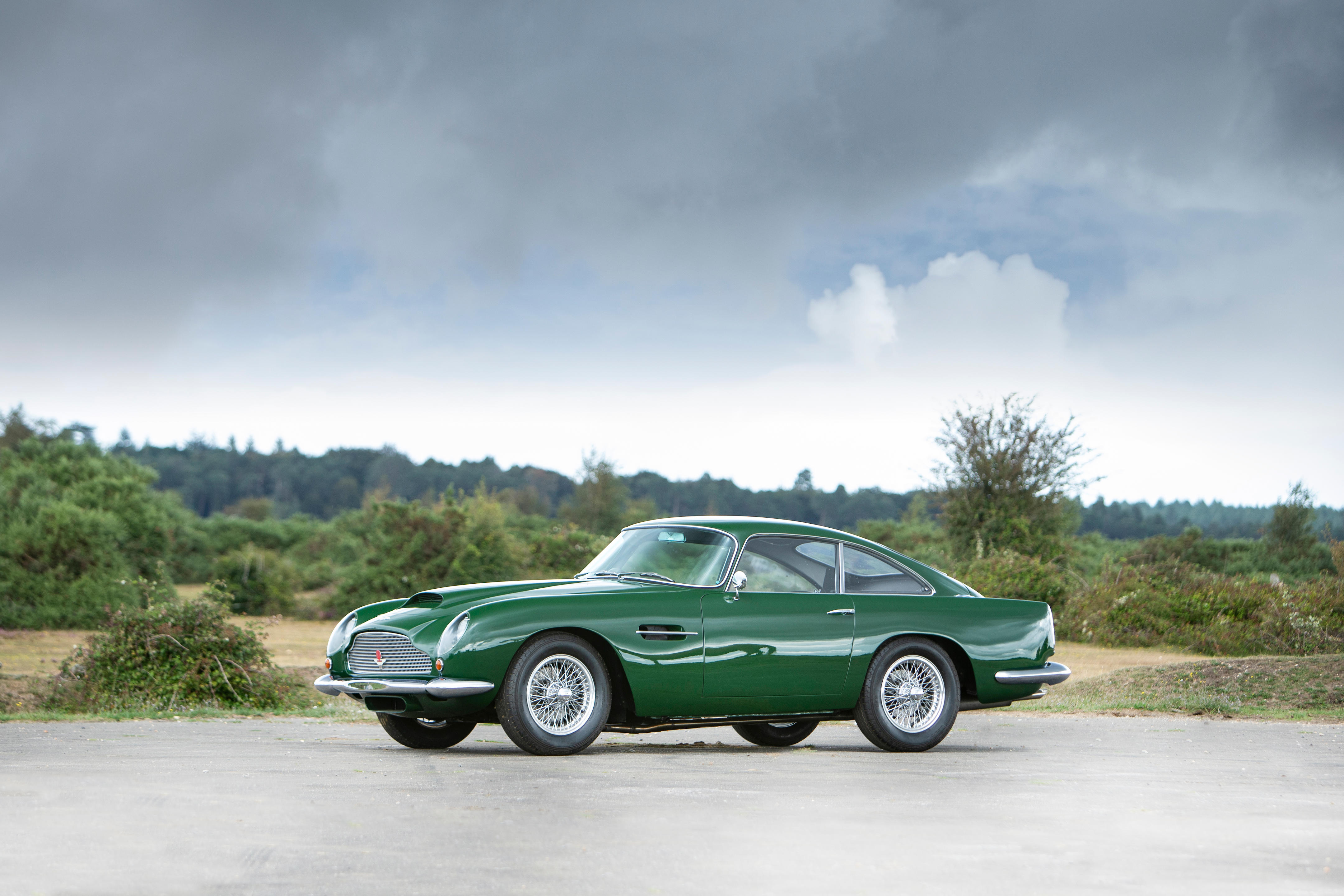



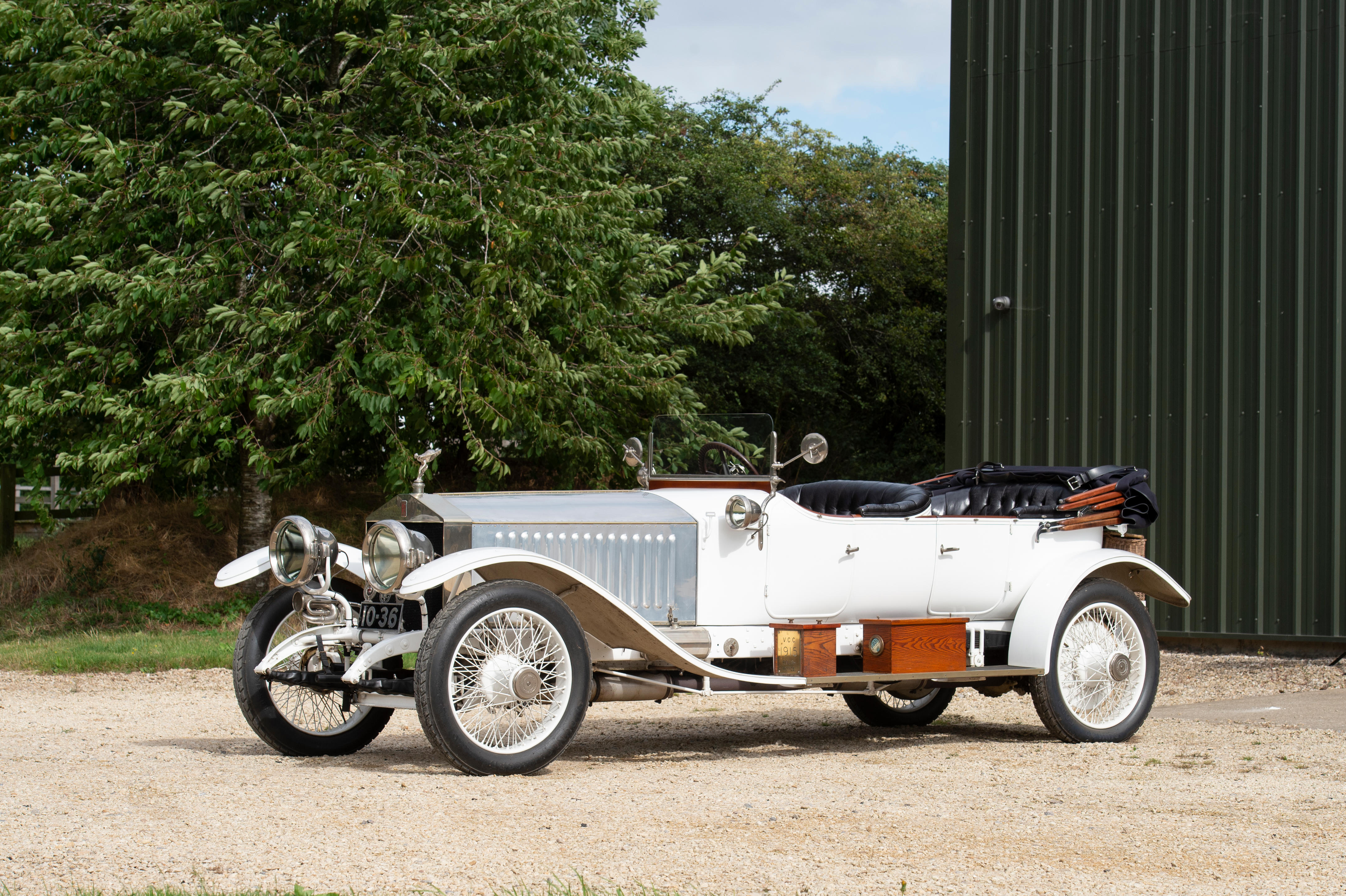
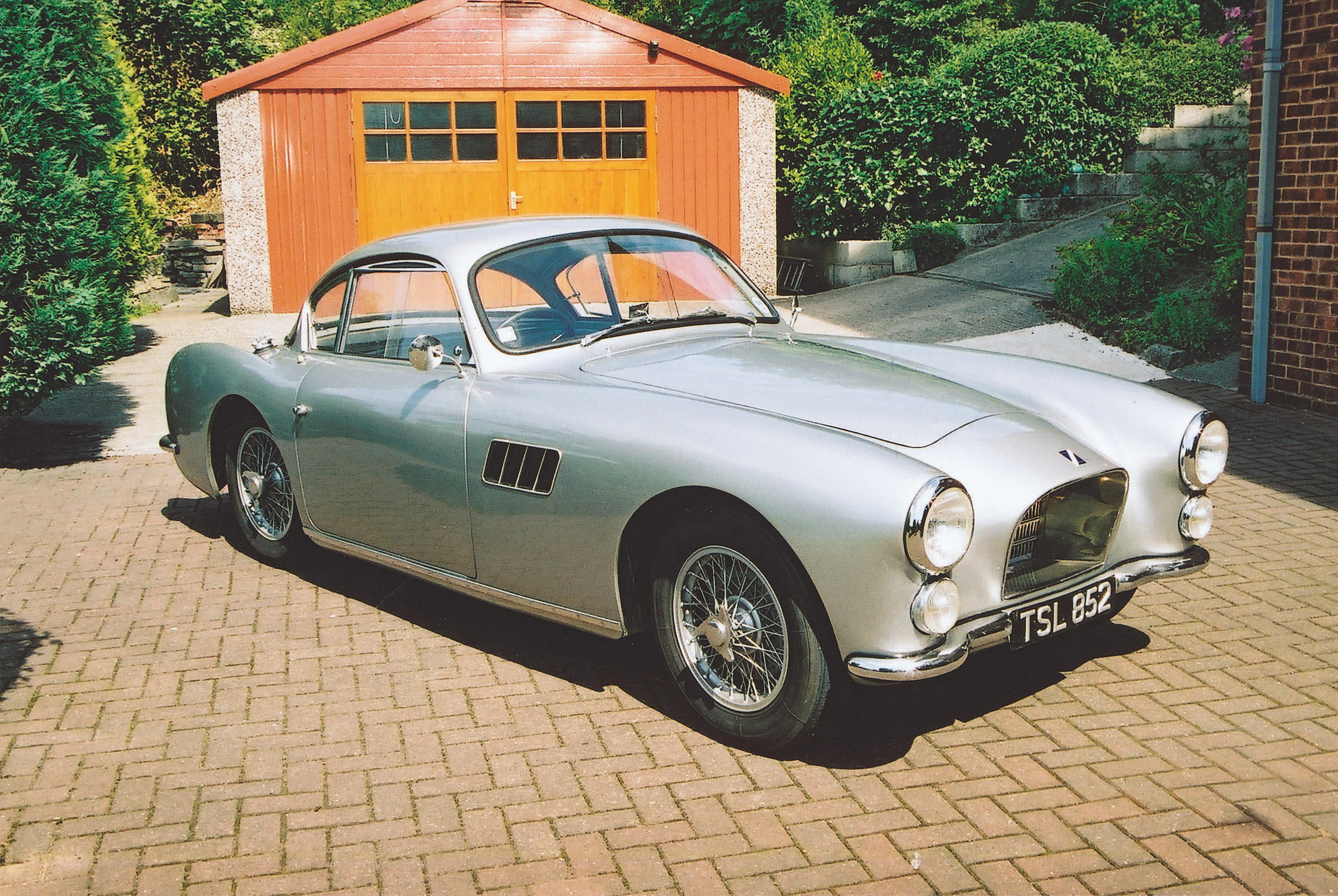
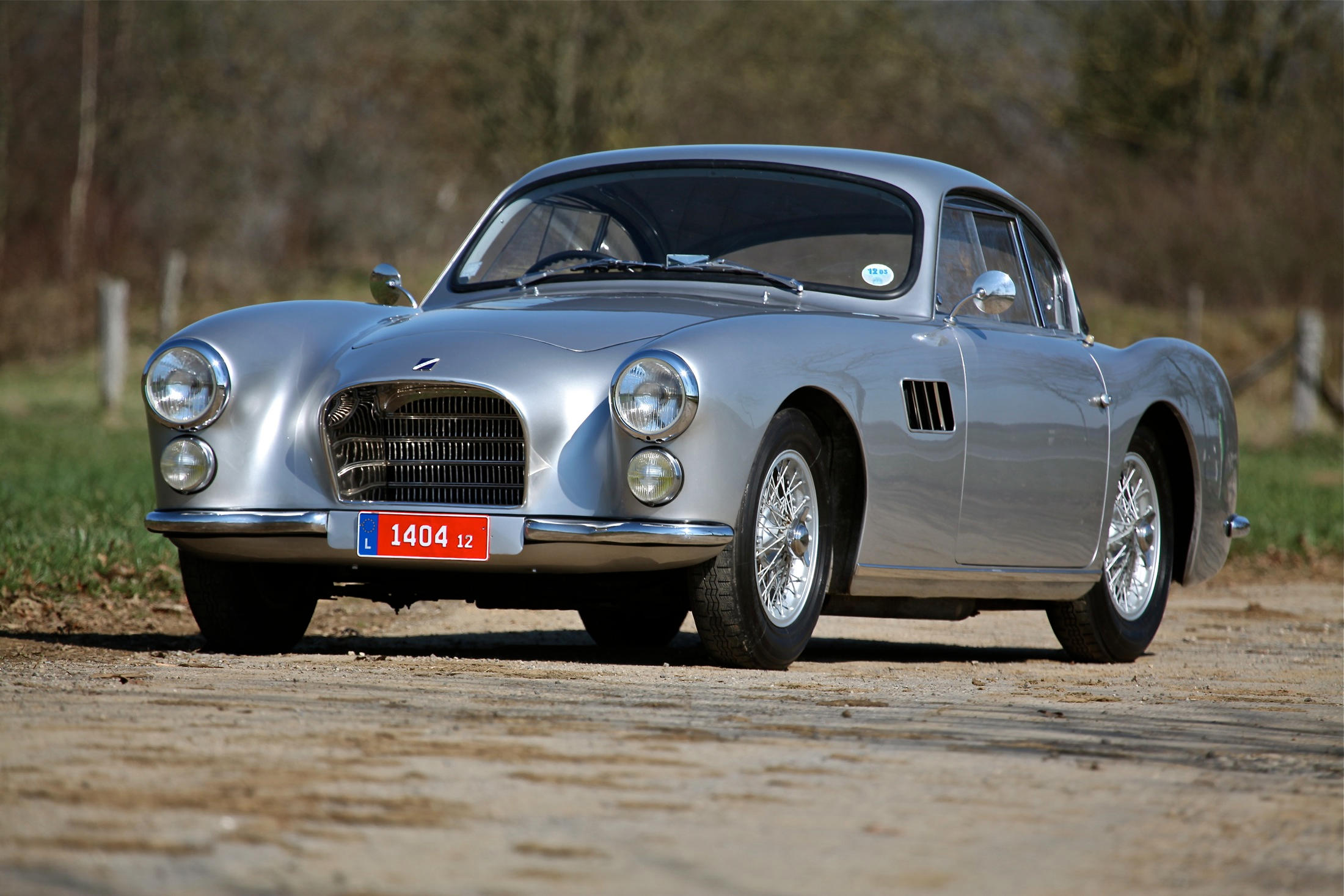

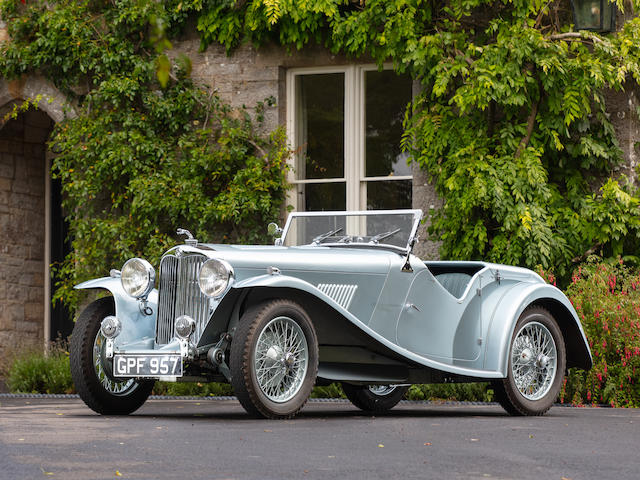


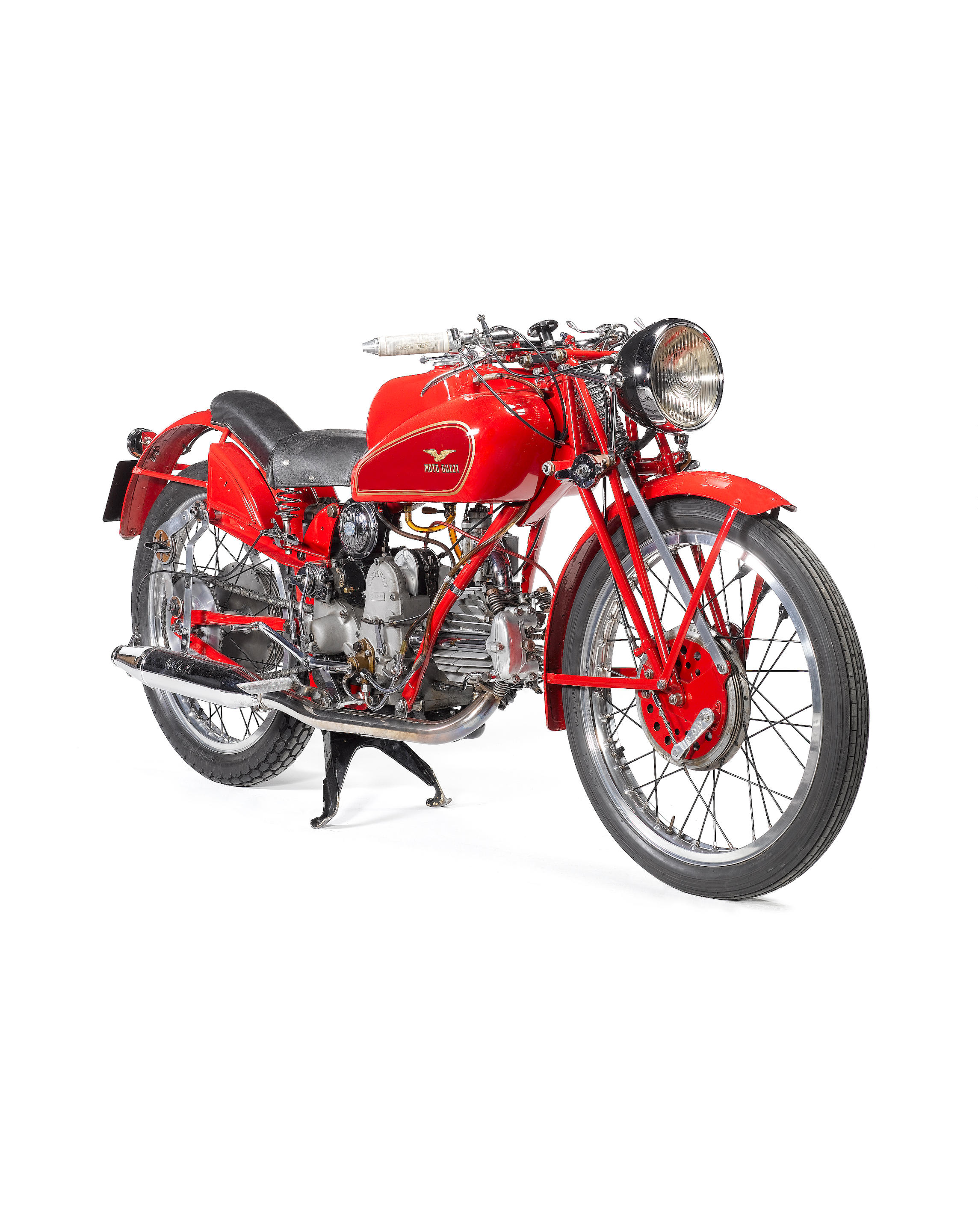
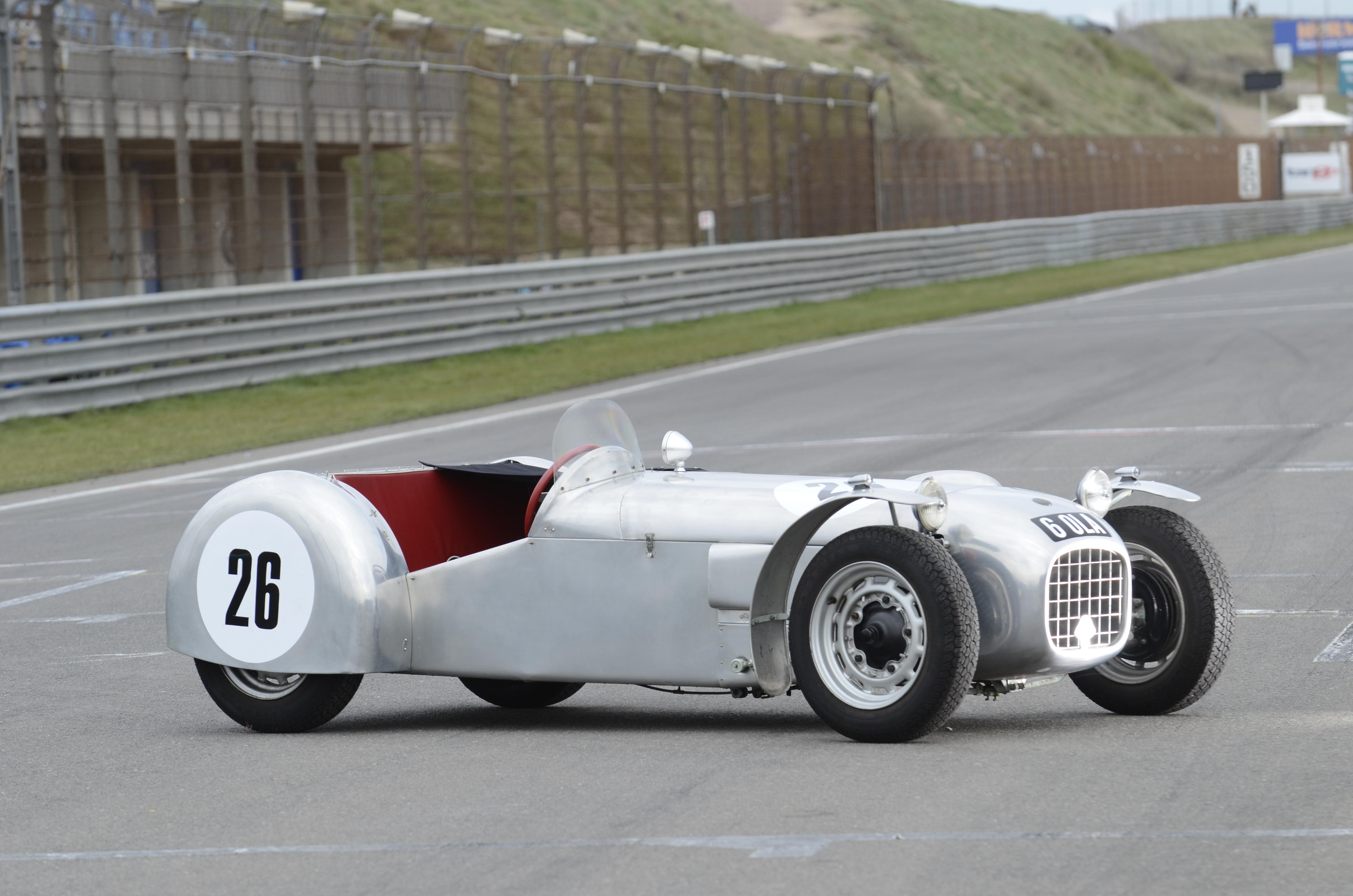


Testen Sie LotSearch und seine Premium-Features 7 Tage - ohne Kosten!
Lassen Sie sich automatisch über neue Objekte in kommenden Auktionen benachrichtigen.
Suchauftrag anlegen